What Is a Smurf?
Smurfing, also known as structuring or layering, is a method used in money laundering to avoid detection by breaking up large cash transactions into multiple smaller transactions. The term “smurfing” originates from the idea of individuals acting as small, inconspicuous agents who collectively contribute to a larger criminal activity. This technique involves making numerous smaller cash deposits or conducting multiple purchases using different individuals or accounts to avoid triggering reporting thresholds set by regulatory authorities. Smurfing aims to obscure the source of funds and avoid regulatory scrutiny by spreading out the illicit activities across various transactions and individuals. These transactions may involve bank accounts, offshore accounts, or even the use of cash. By utilizing smurfing techniques, money launderers attempt to make their illicit funds appear legitimate and avoid detection by financial institutions and law enforcement agencies.
How a Smurf Works?
A smurf works by conducting multiple small transactions on behalf of a larger operation to break down large amounts of illicit funds into smaller, less suspicious sums. These transactions are then deposited into various accounts or used to purchase financial instruments in order to avoid detection by regulatory authorities and obscure the money trail. The primary goal of a smurf is to evade reporting thresholds and assist in laundering money gained through illegal activities.
How Does Smurfing Fit into Money Laundering?
Smurfing, also known as structuring, is a technique used in the placement stage of money laundering, which is the first of three stages in the overall money laundering process. Smurfing is employed to evade detection and break up large sums of money into smaller, less noticeable amounts.
During the placement stage, the goal is to introduce illicit funds into the legitimate financial system. Smurfing involves making multiple small deposits or transactions, usually under the reporting thresholds set by regulatory authorities, to avoid attracting attention. These transactions can be carried out in cash, through bank accounts or credit cards.
By breaking up large sums of money into smaller amounts, smurfing makes it more challenging for regulators to trace the funds back to their source. This technique often involves using structured deposits, where the money is deposited in a staggered manner over an extended period. Smurfs may also use small cash amounts, typically below the threshold for reporting cash transactions, making it harder to detect and monitor.
To further obscure the trail, smurfs often utilize shell companies or offshore accounts, making the funds appear as legitimate business transactions or assets held outside of the jurisdiction where the original crime took place. These strategies make it difficult to identify the true source of funds and heighten the risks of money laundering.
In the subsequent stages of money laundering, layering and integration, smurfing can continue to be used. Layering involves creating complex transactions and conducting multiple transfers, making it even more challenging to trace the origins of the funds. Finally, in the integration stage, the illicit funds are reintroduced into the legitimate economy, appearing as if they come from legitimate sources.
In conclusion, smurfing plays a crucial role in the placement stage of money laundering, where large sums of money are broken down into smaller amounts to evade detection. This technique involves utilizing various methods, such as structured deposits, small cash amounts, shell companies, and offshore accounts, that make it difficult for regulatory authorities to track the origins of the funds. By understanding how smurfing fits into the money laundering process, law enforcement and financial institutions can enhance their efforts to combat this illegal activity.
Common Types of Smurfing
Smurfing is a common technique used in money laundering to evade detection and hide the source of illicit funds. There are several variations of smurfing that criminals employ to carry out their illegal activities. One common type of smurfing involves structuring deposits or transactions in small amounts to avoid triggering reporting thresholds set by regulatory authorities. By breaking up large sums of money into smaller increments, smurfs can fly under the radar and make it more difficult for authorities to trace the funds back to their origin. Another type is using small cash amounts, typically below the threshold for reporting cash transactions, to avoid scrutiny and monitoring. Smurfs may also utilize shell companies or offshore accounts to further obscure the trail, making illicit funds appear as legitimate business transactions or assets held outside the jurisdiction where the original crime occurred. These various smurfing techniques contribute to the complexity and challenges of detecting and combating money laundering activities.
Structuring or “Layering”
Structuring, also known as “layering,” is a common technique employed in money laundering to obscure the origin of illicit funds. This method involves breaking up large transactions into smaller ones that fall below the reporting thresholds set by regulatory authorities.
By fragmenting large amounts of money into multiple smaller transactions, money launderers can avoid drawing attention to their activities. For instance, individuals may deposit several transactions under $10,000 to prevent triggering the requirement for a Currency Transaction Report, which mandates banks to report cash transactions exceeding this amount. Similarly, they may cash in casino winnings in separate portions to keep each transaction below the reporting threshold.
Structuring enables money launderers to create a complex web of financial transactions, making it challenging for authorities to trace the source of funds. It also reduces the likelihood of regulatory scrutiny, as smaller transactions are less likely to raise suspicions compared to large sums of money.
Regulatory bodies and financial institutions employ sophisticated tools and algorithms to detect patterns of transactions that may indicate money laundering. These solutions assign risk scores to unusual financial activities, helping to identify potential instances of structuring or layering.
Efforts to combat money laundering, including structuring, are continuously evolving alongside technological advancements and increased regulatory scrutiny. Heavy fines and legal consequences await those caught engaging in these illegal activities. Therefore, it is essential for financial institutions and regulators to remain vigilant and implement advanced solutions to detect and deter such criminal behavior.
Bulk Cash Smuggling
Bulk cash smuggling is a method commonly used in money laundering, particularly in the context of smurfing. This technique involves physically transporting large sums of cash across borders or within a country without detection or reporting it to regulatory authorities.
Criminals utilize bulk cash smuggling to evade detection and integrate illicit funds into the legitimate economy. By avoiding digital financial transactions and electronic trails, money launderers can obscure the source of their funds and bypass regulatory scrutiny.
This method is attractive to money launderers for several reasons. Firstly, it allows them to move large amounts of cash swiftly and discreetly, reducing the risk of detection by law enforcement agencies. Secondly, by physically crossing borders or moving it within a country, they can exploit gaps in regulatory measures and banking systems.
The integration of illicit funds into the legitimate economy is a crucial goal of money laundering, and bulk cash smuggling facilitates this process. Once the cash is successfully smuggled, it can be used to purchase assets or investments, pay for goods and services, or even deposited into bank accounts. This integration of illicit funds into legitimate financial systems makes it challenging for authorities to differentiate between legitimate and illegal funds.
Overall, bulk cash smuggling is a prevalent money laundering technique that allows criminals to evade detection and integrate illicit funds into the legitimate economy, further complicating efforts to combat financial crimes.
Trade-Based Money Laundering
Trade-based money laundering (TBML) is a sophisticated method used by criminals to launder illicit funds and disguise the origin of their money. It involves manipulating trade transactions to move value across borders, making it difficult for authorities to trace the source of the funds.
TBML typically employs techniques such as over-invoicing and under-invoicing. In over-invoicing, the value of goods or services in a trade transaction is intentionally inflated. This creates a discrepancy between the actual value and the reported value of the transaction, allowing criminals to move excess funds across borders. Under-invoicing, on the other hand, involves intentionally undervaluing the goods or services in a trade transaction. This allows criminals to secretly transfer funds out of a country or evade taxes.
By utilizing these techniques, criminals are able to disguise the illicit origin of their funds. This makes it difficult for authorities to identify and investigate money laundering activities.
Trade-based money laundering is a growing concern for regulators and financial institutions, as it is a complex form of money laundering that requires specialized skills and knowledge to detect and prevent. With the use of advanced technology and analytics, financial institutions are constantly developing solutions to identify and mitigate the risks associated with TBML. However, it remains a significant challenge due to the complexity and global nature of trade transactions.
Shell Companies and False Invoicing
Shell companies and false invoicing are common types of smurfing in money laundering schemes. A shell company is a business entity that is created solely to hold assets or engage in financial transactions, with no real business operations. Criminals use shell companies to disguise the true ownership and control of illicit funds, making it difficult for authorities to trace the source of the funds.
By funneling illicit funds through shell companies, criminals can create a layer of secrecy and anonymity. They establish these companies in jurisdictions with lax regulations or offshore accounts to further hide the true beneficiaries. The use of nominee directors and shareholders adds another level of complexity, making it even more challenging for law enforcement agencies to identify the ultimate owners.
False invoicing, on the other hand, involves manipulating the value of goods or services in a trade transaction. Criminals inflate or manipulate the value of these invoices to facilitate the movement of illicit funds. By over-invoicing, they can move excess funds across borders, while under-invoicing allows them to transfer funds secretly or evade taxes.
The use of shell companies and false invoicing allows criminals to hide the true origin of illicit funds and their involvement in illegal activities. These techniques make it extremely difficult for authorities to trace the money trail and disrupt the money laundering scheme. To combat these practices, stricter regulations and enhanced due diligence are necessary to ensure greater transparency and traceability in financial transactions.
Red Flags for Identifying Possible Smurfing Activity
Introduction:
Smurfing, also known as structuring or structuring transactions, is a method of money laundering that involves breaking down large sums of money into smaller, less suspicious amounts to avoid detection by authorities. This technique is often used to circumvent reporting thresholds and hide the true source and destination of funds. Identifying possible smurfing activity is crucial for financial institutions and regulatory bodies in preventing and combatting money laundering. By recognizing red flags and suspicious patterns of transactions, authorities can take appropriate action and mitigate the risk of illicit funds entering the financial system.
Unusual Money Transactions and Payments
Unusual money transactions and payments can serve as important red flags for detecting possible smurfing activity in money laundering schemes. Smurfing involves breaking down large sums of illicit funds into smaller transactions to avoid detection. By understanding the types of transactions and payments associated with smurfing, financial institutions and regulators can identify and prevent money laundering activities more effectively.
Some examples of unusual money transactions include frequent cash deposits or withdrawals in amounts just below reporting thresholds, multiple deposits from different individuals into the same account, or numerous cash transactions made within a short period. Unusual payments may include multiple small transfers to offshore accounts or a high volume of transactions involving different bank accounts.
These transactions and payments deviate from normal patterns and can be easily detected by advanced technology and risk scoring systems. Identifying such activities is crucial, as they could be indicative of criminal schemes, including drug trafficking, fraud, or terrorism financing.
Reporting these suspicious activities to regulatory authorities is vital in preventing money laundering. Financial institutions play a key role in assisting authorities by reporting unusual transactions, helping to uncover the original crimes, and stopping the integration of illicit funds into the financial system. Failure to report suspicious activity can result in heavy fines and regulatory scrutiny.
In conclusion, recognizing and reporting unusual money transactions and payments is of utmost importance in combating money laundering. By staying vigilant and using advanced solutions, financial institutions and regulatory bodies can effectively detect and prevent smurfing activities and protect the integrity of the global financial system.
A modern and easy to use API Infrastructure
Unusual Bank Account Activity or High Volumes of Low-Value Transactions
Unusual bank account activity, such as high volumes of low-value transactions, can be indicators of smurfing in money laundering schemes. Smurfing, also known as structuring or layering, is a method used by criminals to avoid detection and scrutiny by authorities.
When individuals engage in a large number of small transactions, just below the reporting threshold, it raises suspicions. This pattern of behavior is particularly concerning as it suggests an attempt to hide the source of funds and evade regulatory requirements. Smurfers may also distribute these transactions across multiple accounts to further obscure the origin and purpose of the transactions.
These activities can be indicative of money laundering as they deviate from normal transaction patterns and aim to conceal the illicit nature of the funds. Financial institutions, equipped with advanced technology and risk scoring systems, are well-positioned to identify and flag such suspicious activities.
By monitoring and reporting unusual bank account activity, financial institutions can assist regulatory authorities in uncovering the original crimes, preventing the integration of illicit funds into the financial system, and combatting money laundering. It is crucial to remain vigilant and report any suspicious activities to ensure the integrity of the banking sector and protect against financial crimes such as smurfing.
Unexplained Sources of Wealth or Income
Unexplained sources of wealth or income play a significant role in smurfing and money laundering schemes. Criminals utilize this tactic to make illicit funds appear legitimate, obscuring their true origin and evading detection by authorities.
Unexplained sources of wealth refer to funds or assets that lack a clear explanation of their origin or lawful accumulation. In the context of money laundering and smurfing, individuals engage in a series of small transactions, just below the reporting thresholds, to introduce illicit funds into the financial system. These funds are then mixed with legitimate sources of income to create a facade of lawful wealth.
Criminals employ various methods to make unexplained funds seem legitimate. They may create false invoices or contracts, forge documentation, or use shell companies and offshore accounts to layer and conceal the illicit funds. By introducing smaller transactions, they avoid attracting attention from regulatory authorities, who typically focus on larger, suspicious transactions.
There are several red flags that can indicate the presence of unexplained sources of wealth or income. These include a sudden increase in cash deposits or transfers, inconsistent documentation and explanations for financial transactions, and a discrepancy between assets and reported income. Additionally, multiple accounts being used for small transactions, frequent currency exchanges, and transactions involving high-risk jurisdictions or individuals with known criminal connections are also warning signs of possible illicit activity.
To combat these tactics, financial institutions employ advanced technology, robust risk scoring systems, and thorough customer due diligence. By closely monitoring transaction patterns and identifying unexplained sources of wealth or income, they can play a crucial role in detecting and preventing money laundering activities.
Lack of Records for Cash Transactions and Payments
In the realm of money laundering and smurfing, one significant tactic employed by criminals is the lack of records for cash transactions and payments. This method allows them to conduct their illicit activities under the radar, making it difficult for authorities to trace the source of funds and prove any wrongdoing.
By engaging in cash transactions and payments without proper documentation, money launderers can effectively obscure the trail of illicit funds. Instead of leaving a paper trail, these individuals conduct their transactions in cash, avoiding the need for bank records or other forms of documentation that could raise suspicion.
The lack of records for these cash transactions and payments enables money launderers to create a veil of legitimacy around their activities. Without proper documentation, it becomes challenging for authorities to identify and track the origin of the funds. This lack of transparency aids in camouflaging the source of the illicit funds, making it more difficult to prove that they are derived from criminal activity.
The absence of records for cash transactions and payments is a concerning practice in the fight against money laundering. It highlights the need for financial institutions and regulatory authorities to enhance their monitoring and reporting mechanisms to identify and scrutinize suspicious activities that lack proper documentation.
The Role Of Reporting Thresholds In Preventing Money Laundering Through Smurfing
Money laundering through smurfing is a common method used by individuals seeking to conceal the origin of illicit funds. One way to combat this illegal activity is through the implementation of reporting thresholds. Reporting thresholds refer to the predetermined monetary limits at which financial institutions are required to report certain transactions to regulatory authorities. By setting these thresholds, authorities can detect and monitor suspicious activity, including smurfing, that may indicate money laundering. When individuals engage in multiple cash transactions below the reporting threshold, it can raise red flags and trigger further investigation into the source of the funds. Reporting thresholds act as a deterrent to money laundering through smurfing by increasing the chances of detection and allowing regulatory bodies to take appropriate action. They provide a crucial tool in the fight against financial crimes, ensuring that suspicious activity does not go unnoticed and helping to safeguard the integrity of the financial system.
What are Reporting Thresholds?
Reporting thresholds play a crucial role in preventing money laundering activities, including smurfing. These thresholds are set to determine the transaction amounts that trigger reporting requirements for financial institutions. By establishing these limits, regulatory authorities aim to detect and deter illicit activities by ensuring that any suspicious transactions are reported and investigated.
The purpose of reporting thresholds is to identify and assess potentially unlawful activities or patterns of transactions. If any financial transaction exceeds the established threshold, it becomes subject to regulatory scrutiny to determine its source and legitimacy. By monitoring and reporting transactions that meet or surpass these thresholds, financial institutions can assist in identifying the proceeds of crime.
One of the areas where reporting thresholds are particularly valuable is in the detection of smurfing activities. Smurfing involves splitting large sums of money into numerous smaller transactions to avoid detection. By setting reporting thresholds at an appropriate level, financial institutions can capture these fragmented transactions, potentially uncovering the underlying illegal activity.
In conclusion, reporting thresholds are a critical tool in the fight against money laundering, including smurfing. They establish transaction limits that trigger reporting requirements for financial institutions, aiding in the detection and prevention of illicit activities. By monitoring and reporting transactions that exceed these thresholds, institutions play a key role in protecting the integrity of the financial system and preventing criminal exploitation.
How do Reporting Thresholds Help Prevent Money Laundering Through Smurfing?
Reporting thresholds play a crucial role in preventing money laundering through smurfing, a technique that involves breaking down large sums of money into smaller transactions to avoid detection. These thresholds serve as a regulatory measure designed to monitor and detect suspicious activity in financial transactions.
By setting reporting thresholds at an appropriate level, financial institutions can effectively identify and flag fragmented transactions that may indicate smurfing activities. This helps in uncovering the underlying illegal activity and prevents the integration of illicit funds into the legitimate financial system.
Implementing reporting thresholds offers several benefits in the fight against money laundering through smurfing. Firstly, it enables financial institutions to closely monitor transactions that surpass the established thresholds, ensuring that potentially suspicious activity is thoroughly examined. Additionally, it provides a means to detect patterns of transactions that may be indicative of smurfing activities.
Reporting requirements, including the use of reporting thresholds, are of utmost importance in preventing smurfing-related money laundering. They ensure that financial institutions actively cooperate in identifying and reporting possible instances of smurfing, helping to maintain the integrity of the banking sector and protect it from illicit activities.
In conclusion, reporting thresholds function as a regulatory measure to prevent money laundering through smurfing. They provide an effective means to monitor and detect suspicious activity in financial transactions, serving as a valuable tool in identifying and reporting possible smurfing activities. Implementing reporting requirements, including these thresholds, is crucial in the fight against money laundering.
FAQ
Q: What is smurfing in money laundering?
A: Smurfing, also known as structuring or layering, is a money laundering technique that involves breaking down large sums of money into smaller transactions to avoid detection and scrutiny by authorities.
Q: Why do individuals engage in smurfing?
A: Individuals engage in smurfing to avoid suspicion and detection by authorities. By breaking down large sums into smaller transactions, they hope to make it difficult for law enforcement and financial institutions to uncover the illegal source of the funds.
Q: What are reporting thresholds?
A: Reporting thresholds are predetermined limits set by banks and regulatory authorities that trigger the requirement to report certain financial transactions. These thresholds are intended to identify potentially suspicious activity and ensure compliance with anti-money laundering regulations.
Q: How do reporting thresholds help prevent smurfing?
A: Reporting thresholds play a crucial role in preventing smurfing by enabling financial institutions to monitor and flag fragmented transactions that may indicate the technique is being used. By detecting patterns of suspicious activity, authorities can investigate potential cases of smurfing and disrupt money laundering networks.
Q: How can financial institutions detect smurfing activity?
A: Financial institutions employ various monitoring techniques, such as transaction surveillance and data analysis, to detect smurfing activity. They look for repetitive patterns in transaction amounts, frequencies, and sources to identify suspicious behavior and report it to the appropriate authorities.
Q: What is the role of law enforcement in combating smurfing?
A: Law enforcement agencies play a vital role in combating smurfing by actively investigating and prosecuting individuals involved in money laundering networks. They coordinate with financial institutions, regulatory bodies, and international organizations to share information and disrupt illicit activities.
Q: How can governments and regulatory authorities prevent smurfing?
A: Governments and regulatory authorities can prevent smurfing by establishing robust anti-money laundering frameworks, including strict reporting requirements and strong enforcement mechanisms. They can also promote education and awareness programs to help individuals and businesses understand the risks and consequences of engaging in money laundering activities.





